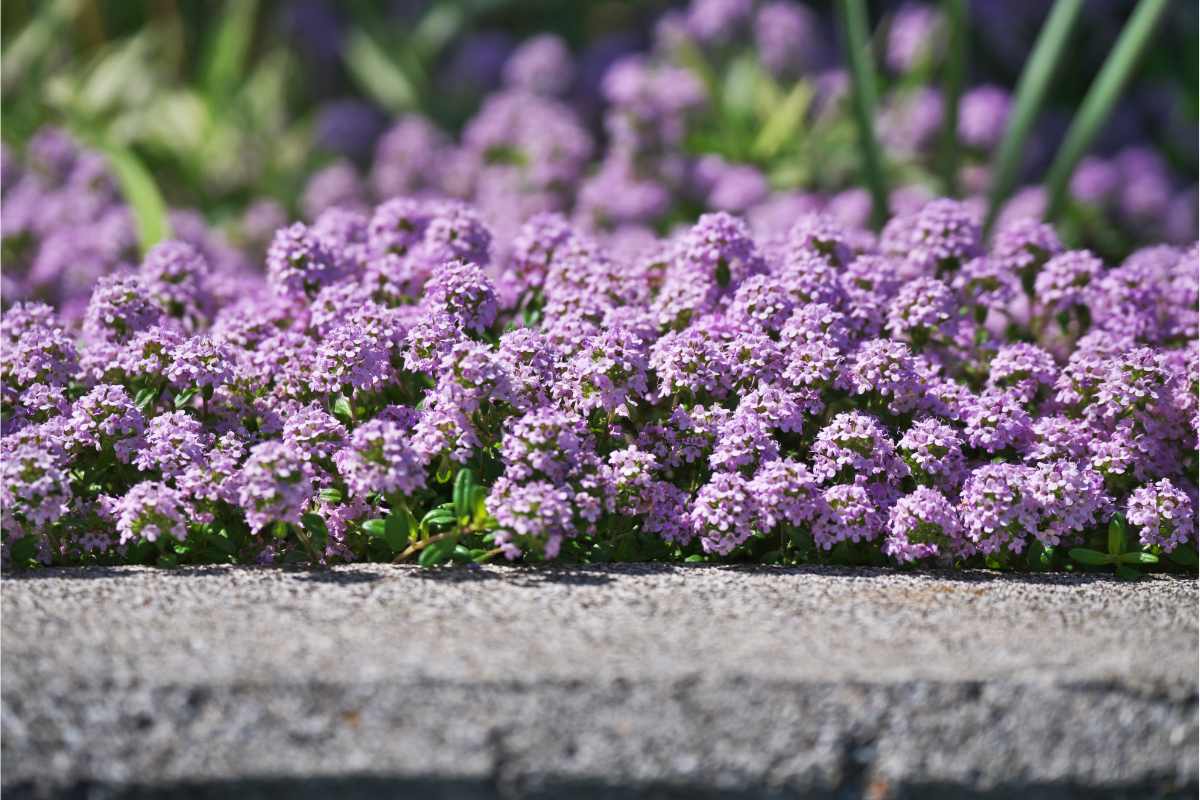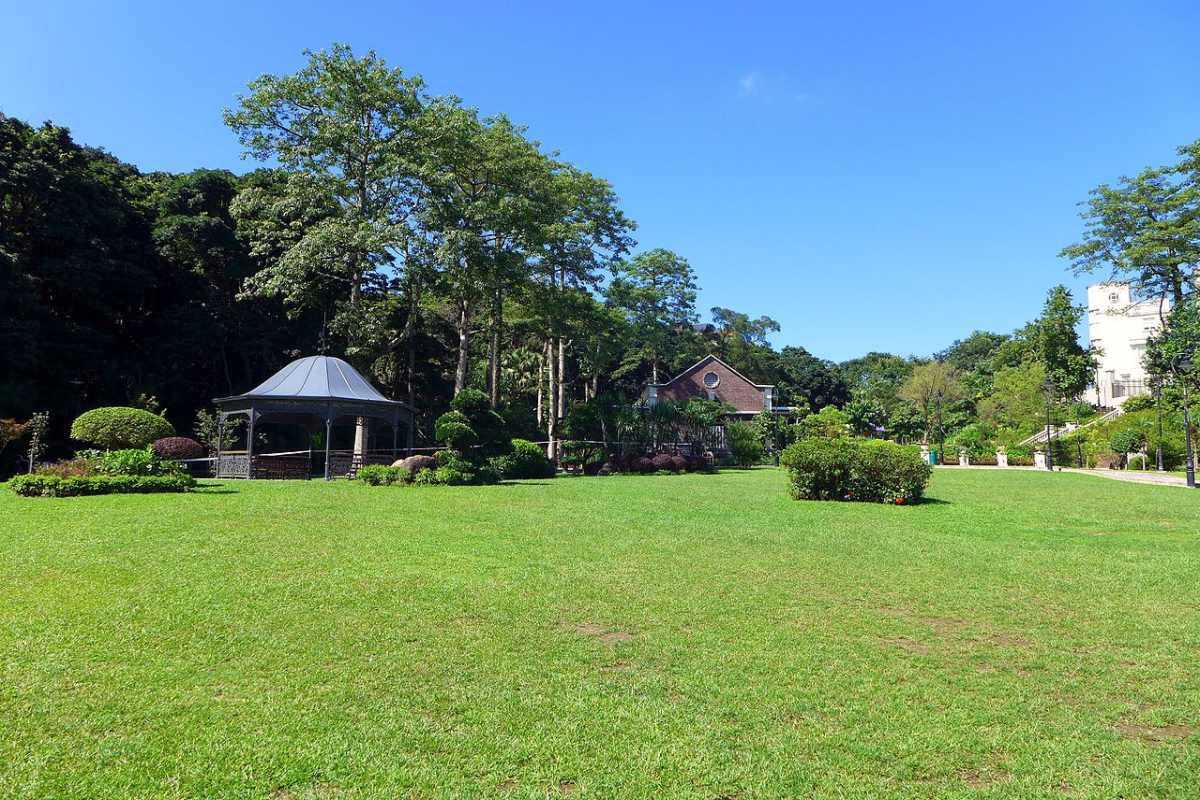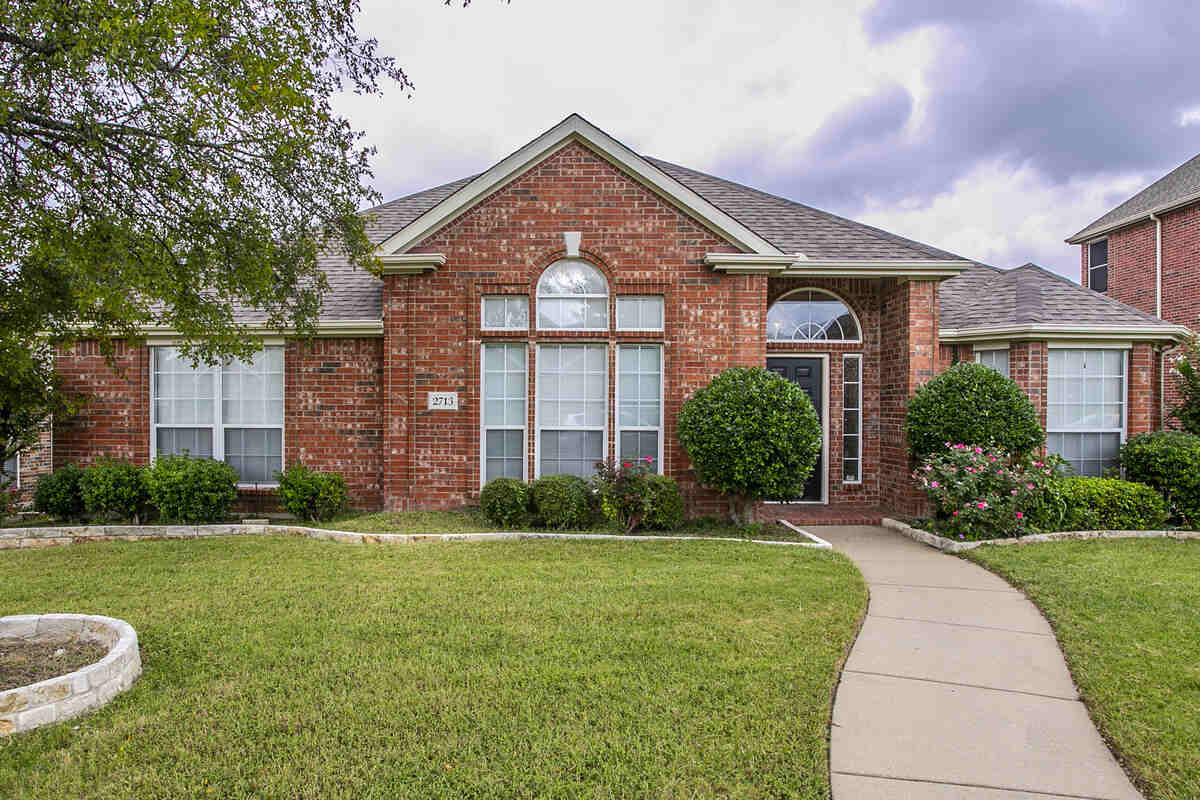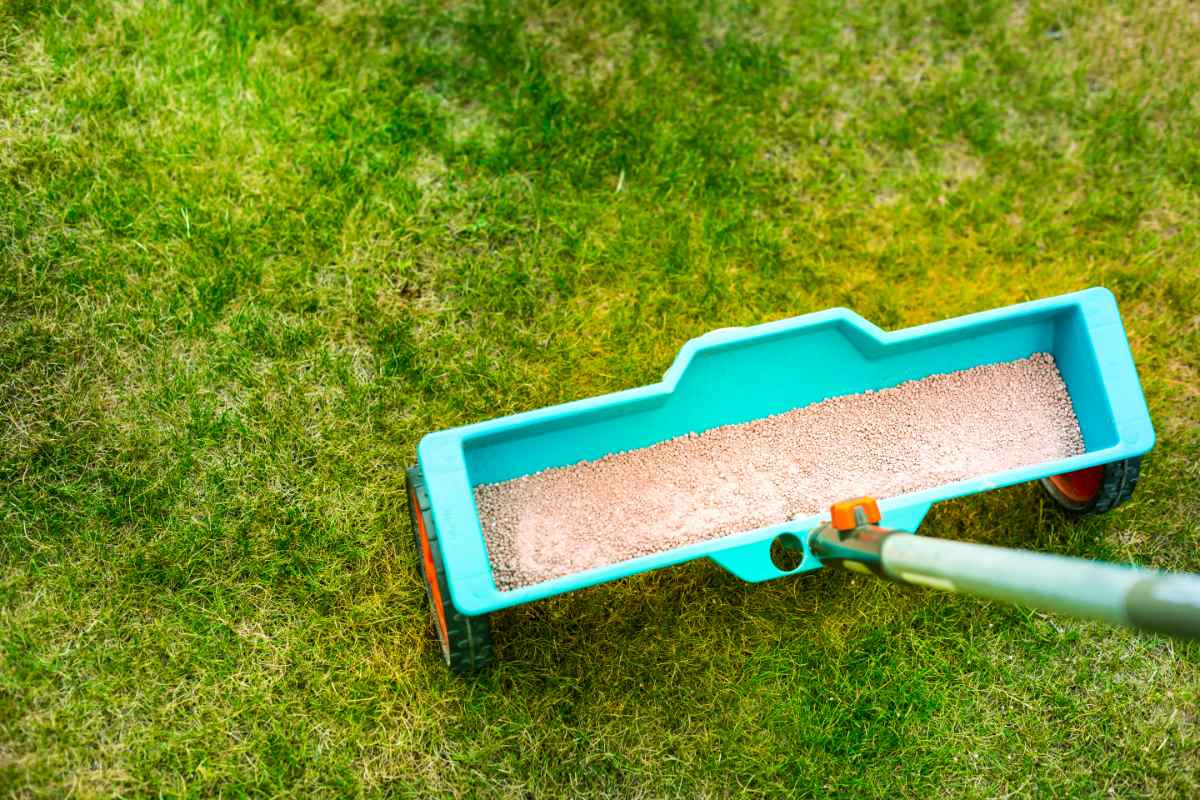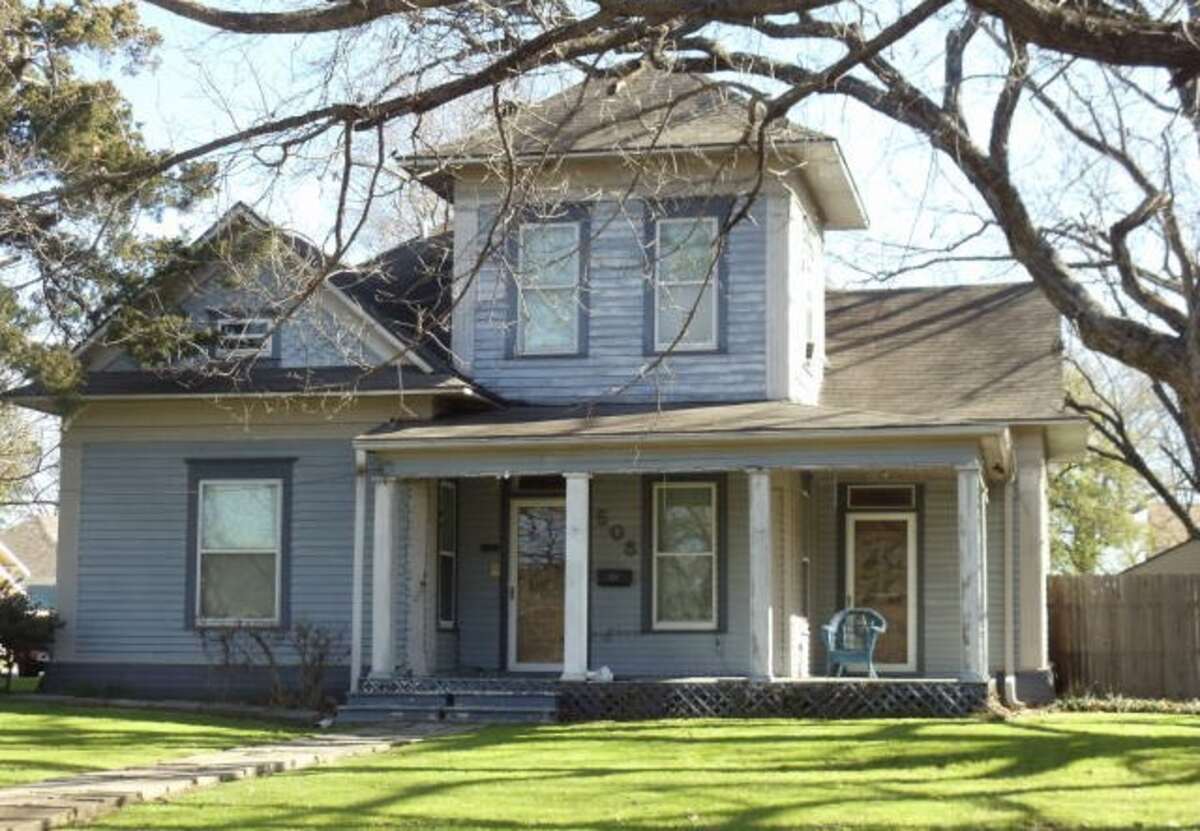
The northern portion of the Lone Star State is known for the never-ending sunflower fields and beautiful green parks that surround Fort Worth and Dallas. But occasional cold spells on one side and periods of drought on the other can make it difficult to cultivate a viable, durable lawn. That’s why here we bring you the best grass seed options for North Texas lawns.
Bermudagrass
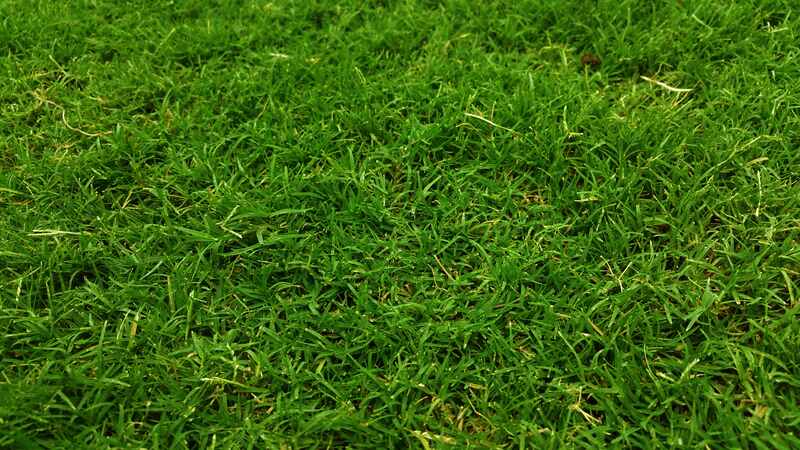
There’s no way you can go wrong if you opt for Bermudagrass. Grown statewide, Bermudagrass is a fool-proof, tough, drought-tolerant grass. If you love hosting outdoor gatherings, Bermudagrass might be your perfect match. This sun-loving turf is one of the best grasses for high-traffic yards.
Some may see its fast growth rate as a downside because it needs frequent mowing and fertilization. (Check out the Best Fertilizers for Bermudagrass for help in selecting a fertilizer.) But it can actually be a positive attribute: Your lawn will recover quickly from damage, always looking lush and vibrant.
Of course, like any lawn turf, Bermudagrass does have its downsides, such as the need for dethatching every late spring or summer. But if well nurtured and maintained, Bermudagrass offers you a beautifully strong green lawn.
- Classification: Warm-season grass
- Spreads by: Stolons and rhizomes
- Shade tolerance: Low; thrives in full sun
- Drought tolerance: High
- Foot traffic tolerance: High
- Maintenance needs: Needs frequent mowing due to fast growth rate; develops thatch easily; needs regular fertilization
- Mowing height: Set the mowing height between 0.5 and 1.5 inches for hybrid Bermudagrass cultivars. Mow common Bermudagrass down to 1.5 to 2.5 inches.
- Potential for disease: Good resistance to disease, although diseases are common; low resistance to insects
- Soil pH: 6-6.5
- Soil type: Tolerates most soil types
- Other notes: Because of its excellent traffic tolerance, the hybrid varieties of Bermudagrass are commonly used on golf courses. Bermuda is also a top choice to be the grass for the FIFA World Cup 2026 fields.
Grass Seed Options:
– Pennington Bermudagrass Bare Spot (5 lb. bag)
– Pennington Smart Seed Bermudagrass Mix (8.75-lb. bag)
– Scotts Turf Builder Bermudagrass (10-lb. bag)
– Hancock Seed Co. Bermudagrass (50-lb. bag)
Buffalograss
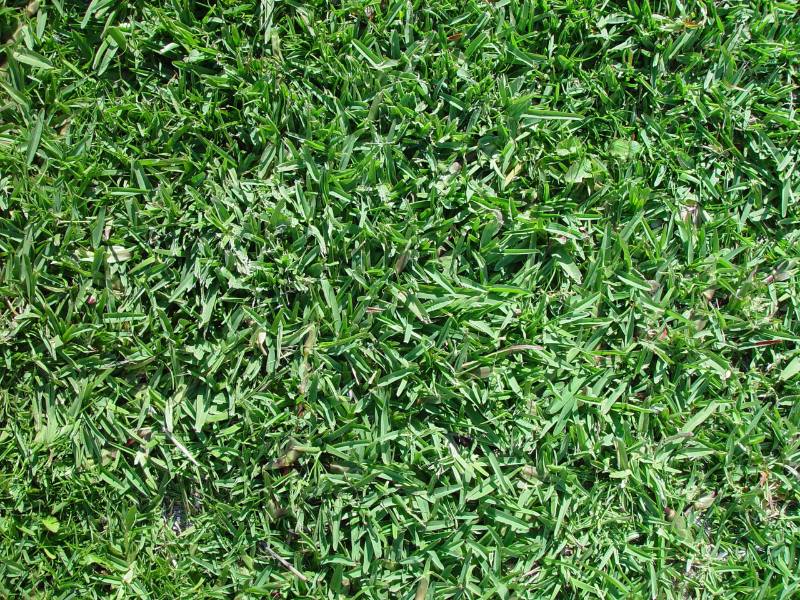
Photo Credit: Pixnio
Compared to Bermudagrass, buffalograss is more drought-tolerant. This turfgrass’s low water requirements make it an optimal choice for North Texas, given this region’s need to conserve water. Like other native plants for Texas landscapes, it knows how to beat the heat and thrive.
This warm-season grass is easy to maintain: Just give it a sunny place and mow it every 7 to 14 days, and you’re all set. There is a catch, however: Buffalograss is prone to common lawn weeds in Texas, so regular weed control is needed. But when comparing the pros and cons, this is certainly a small nuisance for such a drought-resistant, low-maintenance grass.
- Classification: Warm-season grass
- Spreads by: Stolons
- Shade tolerance: Low
- Drought tolerance: High
- Foot traffic tolerance: Low
- Maintenance needs: Low fertilizer and mowing needs. Requires weed control.
- Mowing height: Set the mowing height between 2 and 3 inches.
- Potential for disease: Good tolerance against diseases and insects
- Soil pH: 6.5-7.5
- Soil type: Native clay soils; you’ll have to amend sandy soils
- Other notes: Buffalograss is ideal for home lawns that won’t have foot traffic, as its tolerance is very low. It would be a perfect choice as a ground cover for landscaping.
Grass Seed Options:
– Everwilde Farms Buffalograss Seeds (1 lb. of seeds)
– Scotts Pursue Buffalograss with Natural Seed (1 lb. of seeds)
– Outsidepride Perennial Buffalo Grass Seed (2 lb. of seeds)
Zoysiagrass
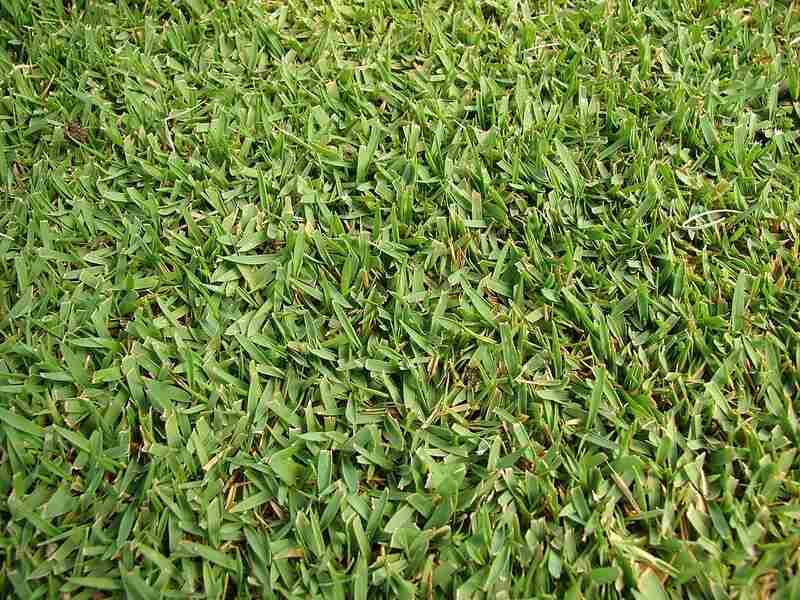
Also very good at withstanding drought, Zoysiagrass is more thirsty than buffalograss, with moderate watering needs. However, it does tend to go brown sooner than Bermudagrass during long-lasting droughts. But if this aesthetic aspect isn’t too much of a downside for you, Zoysiagrass also has plenty of qualities to win your heart.
This turfgrass has low fertilization needs, meaning fewer expenses for you. It also has good disease tolerance and can endure foot traffic better than buffalograss. It is a good middle-ground option for homeowners who want some of the foot traffic tolerance of the Bermudagrass and some of the low-maintenance features of buffalograss.
Did I mention that Zoysiagrass also has a better shade tolerance than the other two options above? Well, now you know. So if you’re trying to grow grass in the shade, then Zoysia may be the turfgrass for you.
- Classification: Warm-season grass
- Spreads by: Stolons and rhizomes
- Shade tolerance: Moderate
- Drought tolerance: Moderate to High
- Foot traffic tolerance: High, but recovers slowly from damage
- Maintenance needs: Low nitrogen fertilization requirements; however, it’s prone to thatch build-up.
- Mowing height: Set mowing height between 1 and 2 inches.
- Potential for disease: Good disease tolerance overall
- Soil pH: 6-6.5
- Soil type: Well-draining, some cultivars are more tolerant of a wide range of soils than others.
- Other notes: Although not as shade-tolerant as St. Augustinegrass, Zoysiagrass still performs well in partial shade. Additionally, the Zoysia matrella varieties have improved shade tolerance — at the expense of needing some extra maintenance.
Grass Plug and Seed Options:
– Zoysia Plugs (50 Large Grass Plugs)
– Zoysia Plugs (50 Full & Lush Grass Plugs)
– Zoysia Plugs (100 Plugs)
– Zoysia Emerald Grass Seeds (1/8 lb. of seeds)
– Zenith Zenith Grass Seeds (1/8 lb. of seeds)
Tall Fescue

Photo Credit: Aaron J. Patton, Ph.D. / Turfgrass Extension Specialist at Purdue University
The severe winters of North Texas can injure warm-season grass types. That’s when turf-type tall fescue enters the stage. Better adapted for drought and heat than other cool-season grasses, this coarse-textured turfgrass also has good cold tolerance.
Also performing well in shaded areas, tall fescue is adapted to a variety of soil types. As a quick grower, this grass needs frequent mowing, but other than that it won’t need intense maintenance.
Just have in mind that tall fescue is not indicated for heavy traffic areas, and you may need to overseed fescues in the fall. In the Texas summer heat, it will need some extra sips of water when compared to warm-season grasses.
- Classification: Cool-season grass
- Spreads by: Produces short rhizomes but has a bunch-type growth habit
- Shade tolerance: Moderate
- Drought tolerance: Moderate to High
- Foot traffic tolerance: Moderate
- Maintenance needs: Frequent mowing. Does not produce significant thatch.
- Mowing height: Set the mowing height to 2 inches when the grass reaches 3 inches tall.
- Potential for disease: Tolerant of most diseases when properly maintained. Vulnerable to brown patch. (Read here to learn more about brown patch control and prevention.)
- Soil pH: 5.5-6.5
- Soil type: Adapted to a wide range of soil types, but prefers fertile clay soils with good drainage.
- Other notes: To grow tall fescue in the Panhandle region, extra irrigation and fertilization will be needed.
Texas Bluegrass
With a great ability to recover from drought stress, hybrid Texas bluegrass is perfect for areas of low water usage — a desirable characteristic for the northern portion of Texas with its harsh droughts. So you won’t have to install a sprinkler system in your yard for Texas bluegrass to thrive.
This turfgrass does well in full sun and partial shade, growing a beautiful bluish-green cover that maintains its color all year round. With moderate maintenance needs, such as regular mowing and yearly dethatching, Texas bluegrass gives you a high-quality lawn with fewer lawn care needs.
- Classification: Cool-season grass
- Spreads by: Rhizomes
- Shade tolerance: Moderate
- Drought tolerance: High
- Traffic tolerance: Low
- Maintenance needs: Moderate; needs average amounts of water, but frequent mowing and more fertilizing than tall fescue.
- Recommended mowing height: Set the mowing height between 2 and 2.5 inches; during periods of high heat, increase the mowing height to 3 to 4 inches.
- Potential for disease: Moderate. It is resistant to brown patch but needs dethatching every year.
- Soil pH: The optimal soil pH range is from 5.7 to 7.0
- Soil type: Alkaline soils can cause iron deficiencies, turning the leaves pale. It does best in acidic soils.
- Other notes: This hybrid Texas bluegrass is actually the result of crossing Kentucky bluegrass (KBG) with native Texas bluegrass. That’s why Texas bluegrass resembles KGB but is adapted to the northern and central areas of Texas.
Grass Seed Options:
– Triple-Play Tall Fescue Grass Seed Blend (5000 sq ft)
– Eretz Kentucky 31 K31 Tall Fescue Grass Seed (choose your size)
– Pennington The Rebels Tall Fescue Grass Seed Mix (7 lb.)
Perennial Ryegrass
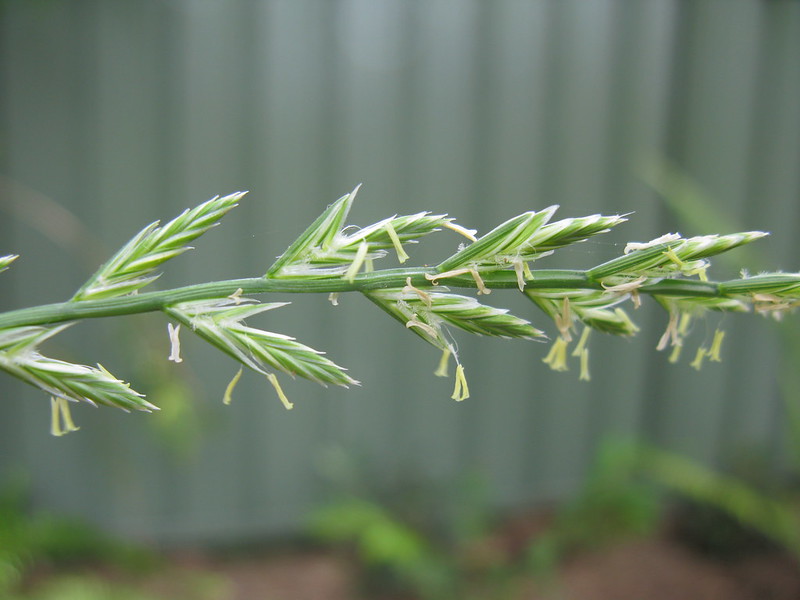
Although commonly used as a temporary lawn, perennial ryegrass can be grown permanently in northern Texas. Perennial ryegrass is often mixed with other cool-season seeds (such as tall fescue and Kentucky bluegrass) that improve its shade tolerance, making it suitable for shaded areas where warm-season grasses may struggle. It’s also a good choice if you want to add stripes to your lawn.
One of the strengths of this grass is its high tolerance for foot traffic, making it widely used in golf courses. Its resistance makes perennial ryegrass one of the best grasses for dogs and kids to play on. It also has moderate fertilization needs, and although you won’t have to worry about dethatching, you’ll have to watch out for diseases.
- Classification: Cool-season grass
- Spreads by: Has a bunch-type growth habit
- Shade tolerance: Low
- Drought tolerance: Low
- Foot traffic tolerance: High
- Maintenance needs: Moderate mowing and fertilization requirements. Thatch is not significant.
- Mowing height: Set mowing height to 1.5 to 2.5 inches
- Potential for disease: High. Common diseases include gray leaf spot, red thread, and leaf spot/melting-out. (Read here to learn more about red thread control and prevention.)
- Soil pH: Can grow in soils with a pH between 5 and 8, but prefers between 6 and 7.
- Soil type: Prefers good drainage and fertility, but can tolerate some poor drainage.
- Other notes: Ryegrasses are usually overseeded into warm-season lawns for winter color, as these types of grass enter their dormancy stage during this period.
Grass Seed Options:
– Outsidepride Perennial Ryegrass Seed (5 lbs.)
– Eretz ProTurf Perennial Ryegrass Fine Lawn Seed (choose your size)
Honorable Mention: Kentucky Bluegrass

Photo Credit: Shutterstock
This turfgrass is commonly used in northern Texas, particularly the Panhandle area, where cool-season grasses can grow year-round. Kentucky bluegrass prefers a drier climate, making it a suitable fit for this area and requiring moderate upkeep overall.
Known for its striking dark green color, Kentucky bluegrass is a good choice for homeowners looking for an aesthetically pleasing grass option. Despite its low shade tolerance, it can be mixed with other cool-season grasses to grow well in shaded areas. Ensure you choose the right lawn fertilizer to keep it lush and vibrant.
- Classification: Cool-season grass
- Spreads by: Rhizomes
- Shade tolerance: Low
- Drought tolerance: Moderate
- Foot traffic tolerance: Moderate
- Maintenance needs: Moderate mowing frequency and high fertilization needs.
- Mowing height: Set mowing height between 2.5 and 3.5 inches.
- Potential for disease: Moderate to high; prone to several diseases, such as dollar spot, leaf spot, necrotic ring spot, summer patch, and stripe smut. (Read here to learn how to get rid of dollar spot.)
- Soil pH: 6-7.5
- Soil type: Performs best in well-drained, heavy soils with high fertility.
- Other notes: Kentucky bluegrass is prone to heat stress and disease when grown in high humidity areas. For better disease resistance, it is often mixed with tall fescue and annual and perennial ryegrass.
Grass Seed Options:
– Jonathan Green (11970) Blue Panther Kentucky Bluegrass Grass Seed (3 lbs.)
– SeedRanch Midnight Kentucky Bluegrass Seed (5 lbs.)
– Jacklin Seed – Biltmore Blue Blend – 100% Kentucky Bluegrass (5 lbs.)
How to Choose the Best Grass for North Texas
I know, this much information can be a handful. But what about dissecting the relevant criteria so you can make an informed decision? Here are some variables to consider before choosing your new lawn.
Shade Tolerance
Is your lawn area exposed to full sun, or does it get more shade? If the latter is the case, a turfgrass with moderate shade tolerance might be the right choice:
- Full sun: Bermudagrass, buffalograss, Kentucky bluegrass, perennial ryegrass (except when mixed with other cool-season grasses)
- Moderate shade: Zoysiagrass, tall fescue, Texas bluegrass
Drought Tolerance
A turfgrass’s ability to withstand drought is crucial to survive the hot, dry Texas summers. Opt for a turfgrass with a drought tolerance befitting your area:
- Low drought tolerance: Perennial ryegrass
- Moderate drought tolerance: Zoysiagrass, Kentucky bluegrass, tall fescue
- High drought tolerance: Bermudagrass, buffalograss, Texas bluegrass
Foot Traffic Tolerance
When choosing turfgrass, keep in mind how you plan to use it. Is it an aesthetically pleasing landscape project or a durable area where your kids can run and play? Ensure you choose a grass that matches the activity level you need:
- Low traffic tolerance: Buffalograss, Texas bluegrass
- Moderate traffic tolerance: Kentucky bluegrass, tall fescue
- High traffic tolerance: Bermudagrass, Zoysiagrass, perennial ryegrass
Maintenance Needs
While lawn care tasks might be a bother to some, it can also be one of the “great feelings…in life,” as it is for Jim Harbaugh, the Michigan football coach. How much of your time are you willing to spend caring for your lawn?
For low-maintenance landscaping for Plano, Dallas, Fort Worth, and surrounding areas, here are the lowest- to highest-maintenance grasses for North Texas:
- Low maintenance needs: Buffalograss
- Moderate maintenance needs: Zoysiagrass, perennial ryegrass, tall fescue, Texas bluegrass
- High maintenance needs: Bermudagrass, Kentucky bluegrass
We’ve Got the Best Pros for Your Lawn
If you’re still not sure on what to do, why not contact a Texas lawn care pro near you? We have trusted lawn care pros in Dallas, Fort Worth, Arlington, Plano, and many more cities across the Lone Star State.
LawnStarter participates in the Amazon Services LLC Associates Program, an affiliate advertising program. LawnStarter earns revenue from products promoted in this article.
Main Image Credit: Renelibrary / Wikimedia Commons / CC BY-SA 3.0

